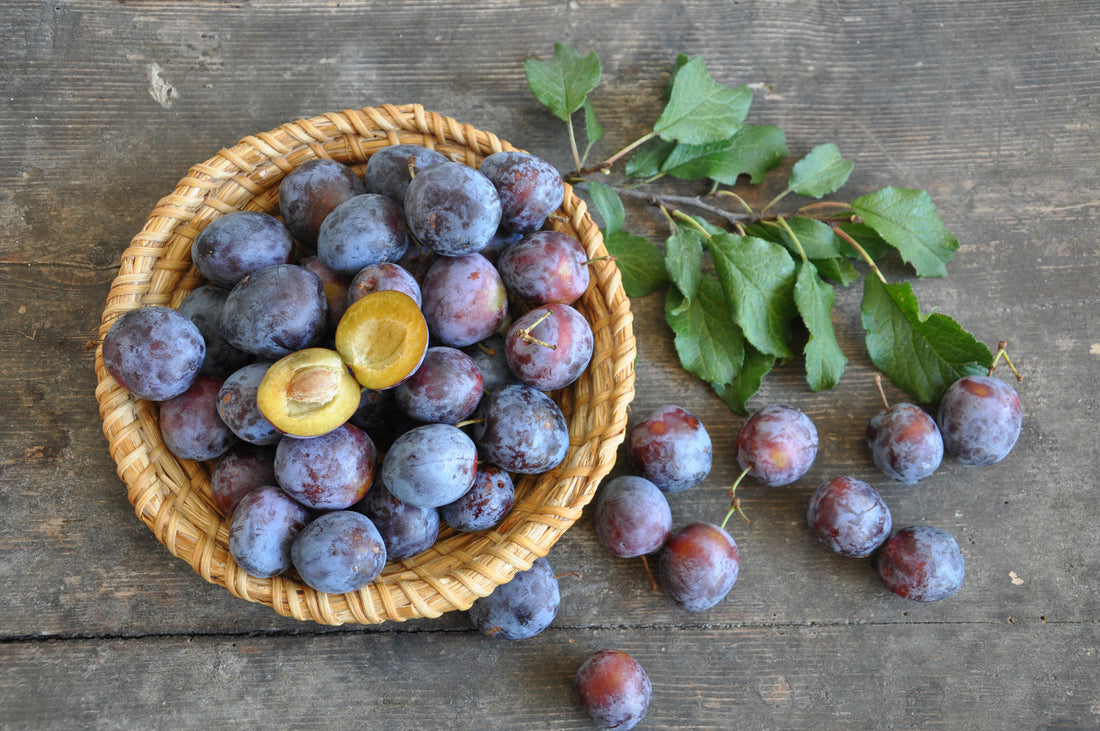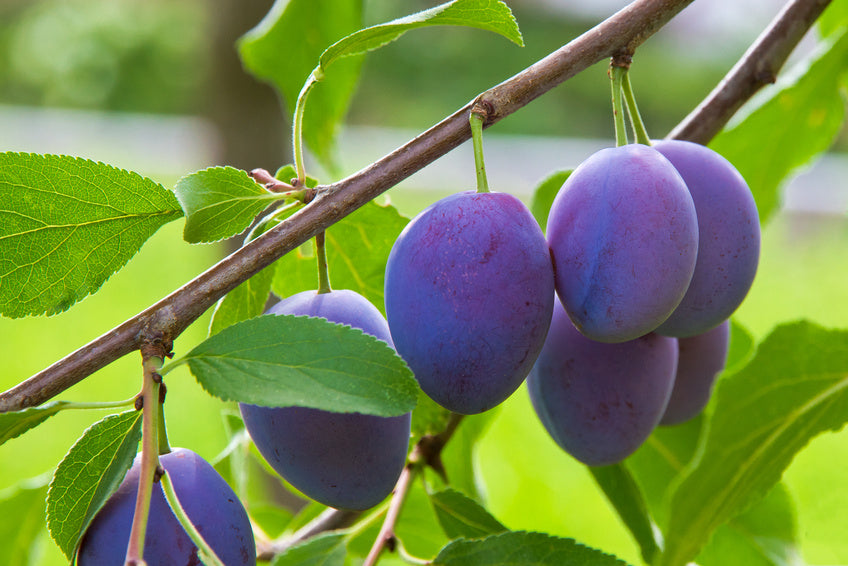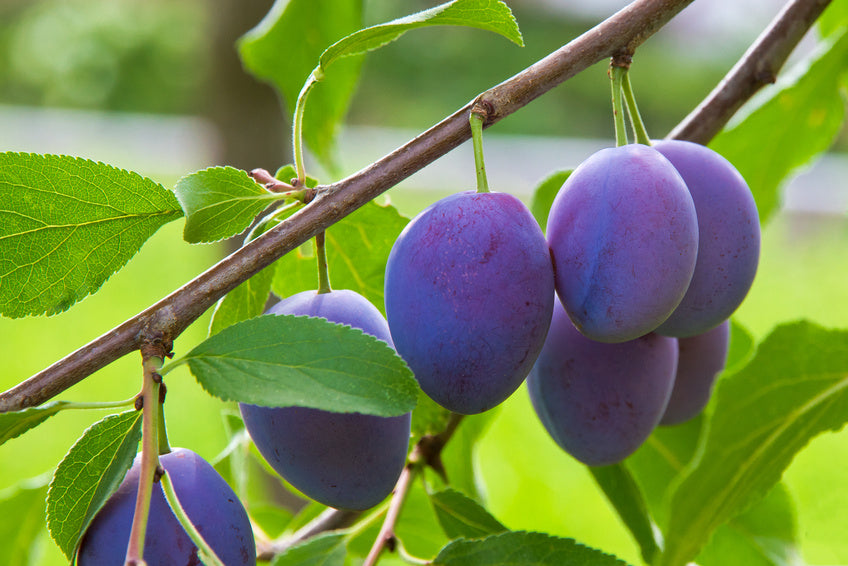plum
Plum, damson, or even squash—this not only delicious but also extremely healthy fruit goes by many names. The plum (Prunus domestica subsp. domestica) is a subspecies of the plum that is now cultivated as a fruit tree in Europe, Western Asia, North America, and North and South Africa. Many gardening books have titles like "From A for Apple to Z for Plum," but its initial letter isn't the only reason why the plum is a staple in every book.

Cultivation – How does it work?
A suitable planting time for plums is either fall or spring. Allow approximately 20 square meters of space per plant, and plum trees or bushes grow to a height of 3 to 8 meters.
Location – Where is best?
Since plums like warm temperatures, the best location for these garden dwellers is in the sun. They prefer sandy-loamy, well-aerated soils. Also, make sure the soil is slightly moist and never completely dry for extended periods.
Care – What needs to be done?
As far as care goes, plums require minimal maintenance, consisting of proper pruning and occasional thinning. They are pruned after harvest, long enough before frost to allow the cut surfaces sufficient time to dry. Always prune from the outside in. Branches that still hang in an arch toward the ground after harvest should be pruned first. Don't forget to prune bare and densely packed branches. The more severe the pruning, the stronger the new growth.
Harvest – What should you consider?
The harvest season extends from July to October. You can tell when the fruit is ripe when it turns deep blue. Not all of the plums will ripen at the same time, as they receive different amounts of sun. So don't harvest all of your plums at once. It's better to harvest the plums in stages. Pick the fruit without the stem or shake them off.
Plums are ideal for eating fresh, but can also be processed into cakes, compotes, dried fruit, or juice. They're also ideal for freezing. However, the early varieties are usually only suitable as snacks.

Botany – What kind of plant is this?
The plum, like its close relative the plum, belongs to the rose family. It's often difficult to distinguish a plum from a prune. Just take a closer look at the fruit and look for a seam. If you find one, it's a plum, as plums don't have this characteristic. Plum flesh is also firmer and has a high sugar content. Plum trees can be found wherever the climate is temperate. Many varieties are self-pollinating; otherwise, sloes make good pollen sources. Due to its reddish-brown color and hardness, plum wood is highly sought after by carpenters for making luxurious furniture.
Cultural history – How did the plum come to us?
The first Asian wild plums, the ancestors of our modern-day plums, were still sour and dry 2,000 years ago. Their flavor therefore had little in common with the juiciness and sweetness that characterize plums today. We have the ancient Greeks to thank for this, importing this fruit from Damascus, where it was cultivated and popularized by the Romans in 150 BC.
Varieties – Which are recommended?
The most popular varieties include:
- Ersinger Frühwetschge: medium-sized, elongated-oval, blue, sweet-sour, harvest time: July/August
- Hanita: very large, productive, harvest time: August/September
- Domestic plum: oval, sweet, ideal for any use, self-fertile, only plant in sharka (virus disease)-free areas, harvest time: September
- Anna Späth: round-oval, large, sweet, harvest time: September/October
- President: very large, oval, blue-red, harvest time: October, only very warm locations
TEXT: Carina Naeve









































































































